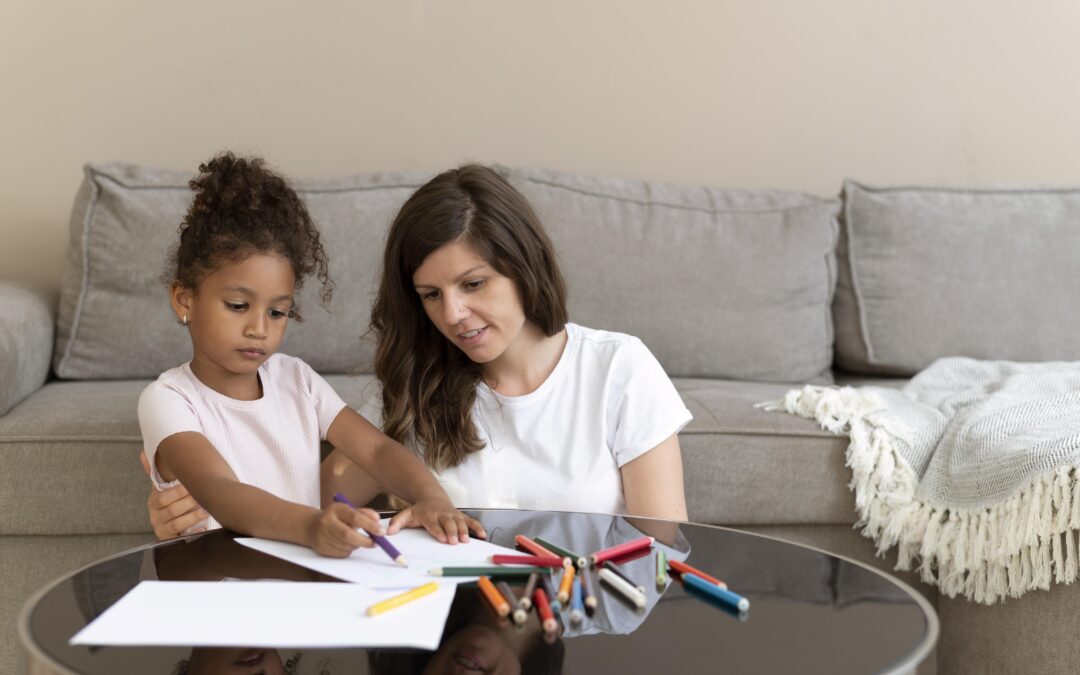Daily routines can sometimes feel repetitive and challenging for families, particularly when children seem resistant to activities or parents feel overwhelmed by the constant demands of family life. However, these ordinary moments present perfect opportunities for families to create meaningful connections while teaching valuable life skills. The simple act of crafting happiness jars together transforms potentially mundane afternoons into opportunities for gratitude practice and family bonding, creating what we like to call “everyday magic.”
The Science of Gratitude in Child Development
Research consistently demonstrates that children who regularly practice gratitude develop stronger emotional resilience, better social relationships, and more positive outlooks on life. Unlike adults, who can consciously choose to focus on positive aspects of their experiences, children need concrete tools and guided practice to develop gratitude habits that will serve them throughout their lives.
Happiness jars provide tangible, visual representations of positive experiences that children can literally see and touch. This physical element helps young minds, which think concretely rather than abstractly, understand and internalize the concept of gratitude. When children write down or draw happy memories, they’re engaging multiple senses and learning modalities, which strengthens neural pathways associated with positive thinking patterns.
The act of regularly adding to happiness jars creates routine gratitude practice that becomes automatic over time. Children begin naturally noticing positive moments throughout their days, knowing they’ll want to add these experiences to their collections. This shift in attention from problems to possibilities represents a fundamental change in how children approach daily life.
Building Family Connections Through Shared Creation
The process of creating happiness jars together offers families precious opportunities for meaningful conversation and connection. When parents and children sit side by side, decorating jars and sharing happy memories, they create intimate spaces for communication that might not naturally occur during busy daily routines.
Storytelling and Memory Sharing
As families work together on their happiness jars, parents often find themselves sharing childhood memories, family traditions, and personal experiences that children rarely hear during routine interactions. These storytelling moments help children understand their family history and develop deeper connections to their heritage and values.
Children, in turn, share their own perspectives on family experiences, often revealing insights that surprise parents. A child might remember details about a family outing that parents had forgotten, or express particular appreciation for moments that seemed insignificant at the time. These revelations help parents better understand their children’s inner worlds and what brings them genuine joy.
Creating Safe Emotional Spaces
The collaborative nature of craft activities creates naturally safe environments for emotional expression. Children who might struggle to articulate feelings in direct conversation often open up during hands-on activities. The focus on positive memories and experiences helps establish emotional safety, making children more likely to share both happy and difficult feelings.
Parents often discover that children have been worried about situations that seemed minor to adults, or conversely, that children have found deep joy in simple moments that parents hadn’t noticed. These insights help families align their priorities and attention with what actually matters most to their children.
The Role of Professional Caregivers
Nannies and other professional caregivers play crucial roles in extending gratitude practices beyond occasional family craft sessions. When families work with professional childcare providers, happiness jar activities can become regular parts of children’s routines, reinforcing the positive patterns that families establish during weekend or evening craft times.
Consistency and Routine Integration
Professional nannies excel at incorporating meaningful activities into daily routines without making them feel forced or artificial. They can help children add to their happiness jars after particularly positive experiences, during quiet moments, or as transitions between other activities. This consistent practice helps gratitude become a natural part of children’s thinking patterns rather than something reserved for special occasions.
Experienced caregivers also understand how to adapt happiness jar activities for different moods, energy levels, and developmental stages. They might suggest drawing instead of writing for younger children, or encourage older children to include more complex reflections about personal growth and relationships.
Supporting Family Values
When nannies understand family priorities and values, they can reinforce gratitude practices that align with what parents hope to cultivate in their children. They can help children recognize and appreciate family traditions, relationships with extended family members, and experiences that reflect the family’s unique culture and priorities.
Professional caregivers can also help bridge communication between parents and children by sharing observations about what brings children particular joy or what challenges they’re facing. This information helps parents better understand how to support their children’s emotional development and strengthen family connections.
Practical Implementation Strategies
Creating effective happiness jar routines requires thoughtful consideration of family dynamics, children’s developmental stages, and practical logistics that support long-term success.
Age-Appropriate Adaptations
Younger children (ages 3-6) benefit from happiness jars that emphasize drawing, sticker placement, and simple word recognition. Parents might write down children’s verbal descriptions of happy moments, helping children see their thoughts translated into permanent records while building pre-literacy skills.
School-age children (ages 7-11) can take more ownership of their happiness jars, writing their own entries and developing more sophisticated reflection practices. They might categorize their happy memories, create themed collections, or even maintain multiple jars for different types of positive experiences.
Teenagers, while they might initially resist craft activities, often appreciate more sophisticated versions of happiness jar concepts. They might create digital collections, photo-based memory systems, or written journals that serve similar functions while feeling more age-appropriate.
Overcoming Implementation Challenges
Some children initially resist happiness jar activities, particularly during difficult emotional periods when focusing on positive experiences feels forced or artificial. Parents and caregivers can address this resistance by starting small, focusing on tiny moments of joy rather than major celebrations, and allowing children to express the full range of their emotions without pressure to feel happy.
The key involves making happiness jars additions optional rather than required, allowing children to participate when they feel genuinely motivated rather than creating additional pressure during already challenging times. Over time, most children naturally gravitate toward these positive practices when they’re presented as opportunities rather than obligations.
Long-Term Benefits for Family Relationships
Families who consistently practice gratitude through happiness jars and similar activities often report improved communication, reduced conflicts, and stronger emotional connections between family members. Children develop vocabulary for discussing positive experiences and learn to notice and appreciate efforts that parents and other family members make on their behalf.
These improved communication patterns extend beyond craft activities into daily family interactions. Children who regularly practice identifying positive experiences become more likely to express appreciation spontaneously, recognize when others are struggling and offer support, and maintain optimistic perspectives during challenging periods.
Building Emotional Intelligence
Regular gratitude practice through happiness jars helps children develop crucial emotional intelligence skills that serve them throughout their lives. They learn to recognize and name positive emotions, understand what types of experiences bring them joy, and appreciate the efforts that others make to support their happiness and wellbeing.
These skills translate into better friendships, improved academic performance, and greater resilience during inevitable childhood challenges. Children who understand what brings them genuine happiness are better equipped to make choices that support their emotional wellbeing and build positive relationships with others.
Creating Lasting Family Traditions
Happiness jars often evolve into treasured family traditions that continue long after children outgrow the original craft activity. Families might establish weekly jar-sharing sessions, annual reviews of collected memories, or traditions of creating new jars to mark special occasions or transitions.
Some families create community happiness jars that include contributions from all family members, while others maintain individual collections that reflect each person’s unique perspectives and experiences. The specific format matters less than the consistent practice of noticing, recording, and celebrating positive moments together.
Conclusion
Happiness jar creation represents far more than simple craft activity. These five-minute projects create opportunities for gratitude practice, family bonding, and emotional development that can transform how children approach daily challenges and relationships. When supported by consistent caregiving from both parents and professional nannies, happiness jar activities become powerful tools for building family connections and supporting children’s emotional growth.
The beauty of happiness jars lies in their simplicity and adaptability. Every family can modify this basic concept to reflect their unique values, traditions, and preferences while maintaining the core benefits of gratitude practice and shared creative time. In a world that often emphasizes problems and challenges, happiness jars offer families concrete ways to notice, celebrate, and remember the joy that exists in ordinary moments of daily life together, creating everyday magic that strengthens family bonds and nurtures grateful hearts.

